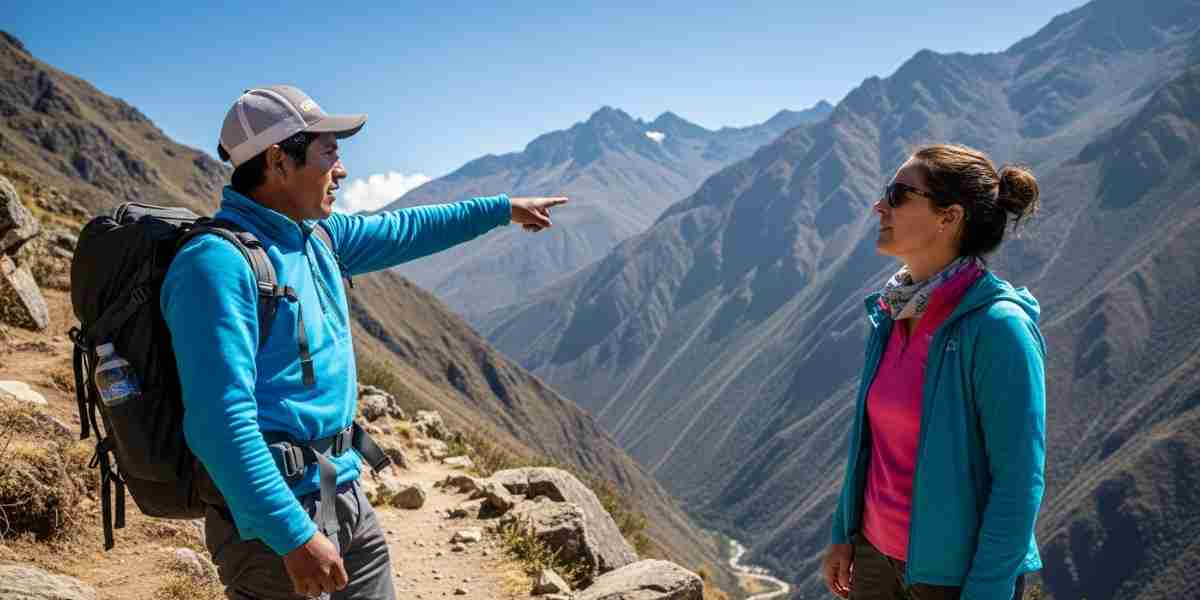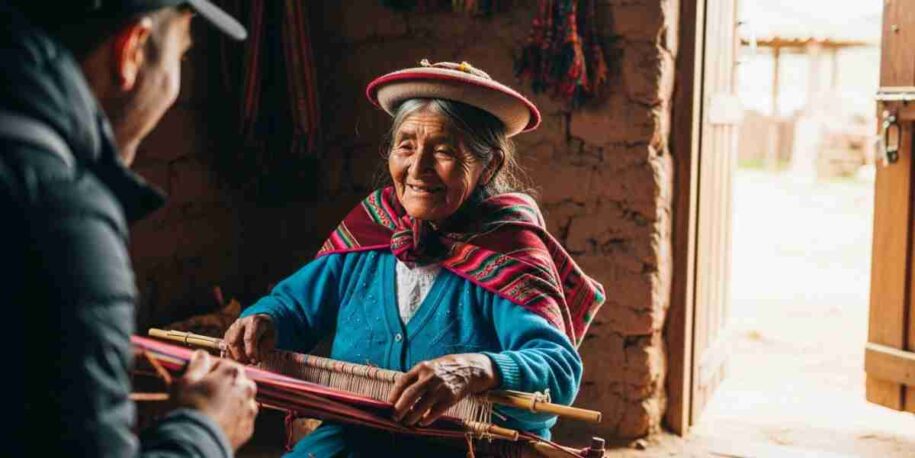There’s a word that echoes in the mind of every conscious traveler, a silent goal that shapes itineraries and fuels anxieties: “authenticity.” We chase it down dusty roads, seek it in bustling markets, and hope to capture it in a photograph. But I’m here to tell you, after years of guiding journeys through the heart of the Andes, that the relentless pursuit of this idealized “authenticity” is one of the biggest traps in modern travel. The very thing you’re looking for might be blinding you to the profound, living reality right in front of your eyes. This is the great, dangerous myth of authenticity in travel.
The myth whispers that somewhere out there, a version of Peru exists that is “untouched” by the modern world, a place frozen in time, waiting to be discovered. This fantasy often involves silent, stoic natives in colorful clothes, performing ancient rituals with no awareness of the world beyond their village. It’s a compelling story, but it’s just that: a story. And it’s a deeply problematic one. It reduces vibrant, intelligent people to museum exhibits and denies them their place in the 21st century.
When you arrive in Peru with this mindset, you begin to judge every interaction. Is that weaver in Chinchero making that textile for her family or for me, the tourist? Is this ceremony a genuine expression of faith or a performance for my benefit? This constant questioning creates a barrier. Instead of being present in the moment, you’re stuck in your head, acting as a cultural detective, trying to separate the “real” from the “fake.” The irony is that in your search for the untouched, you touch nothing at all.
✨ Shifting the Lens: From “Authentic” to “Honest”
Let’s replace a loaded word with a better one: “honest.” An honest interaction isn’t about pretending the modern world doesn’t exist. It’s about acknowledging it. The reality of the Andes today is a beautiful, complex tapestry woven from ancient traditions and modern realities. That woman weaving in the Sacred Valley? She is both a guardian of a thousand-year-old art form and a savvy entrepreneur providing for her children’s education. Her craft is her culture, her identity, and her livelihood. To buy a textile from her isn’t to taint her culture with commerce; it is to participate in her life in a way that is respectful, reciprocal, and honest. That is a far more transformative travel experience than silently observing her from a distance.
This is what we see on journeys like the Lares Trek, a route cherished for its deep cultural connections. You are not a spectator watching a staged play. You are a guest, welcomed into a community that is actively navigating its place in the world. They are not “performing” their culture for you; they are sharing it. The welcome you receive, the food you share, the smiles from the children—these aren’t scripted. They are moments of genuine human connection, the very thing travelers crave.
The Living Culture of Modern Peru
Culture is not a static monument. It’s a flowing river. It adapts, it evolves, it incorporates new ideas and technologies. To demand that Andean culture remain unchanged for our viewing pleasure is to wish it into extinction. The true magic is seeing how traditions persist and transform. It’s hearing the Quechua language, the tongue of the Incas, spoken by a young guide who also messages his family on WhatsApp. It’s seeing offerings made to the Pachamama (Mother Earth) on a mountain pass, a belief that coexists with Catholicism and a modern understanding of ecology.
«The most authentic thing you can experience is the present moment. A culture is not a collection of artifacts; it’s the living, breathing, and evolving spirit of its people. To engage with that spirit, here and now, is the true purpose of travel.»
This perspective frees you. It allows you to appreciate the skill of a craftsperson without suspicion. It allows you to enjoy a traditional meal, knowing that the ingredients might have been purchased at a local market alongside Coca-Cola. It allows you to see the people of Peru not as relics of the past, but as your contemporaries, living lives as complex and dynamic as your own.
🛡️ Ethical Engagement: The Antidote to the Authenticity Myth
So, if we discard the hunt for a mythical past, what do we replace it with? We replace it with a commitment to ethical and conscious travel in Peru. This is a far more powerful and rewarding framework.
Instead of asking “Is this authentic?” ask better questions:
- Is this exchange respectful? Am I treating the person in front of me as an equal, with curiosity and humility?
- Is this interaction fair? Does this tourism model benefit the local community economically and socially, or does it exploit them?
- Am I learning or just looking? Am I engaging in a way that deepens my understanding of the world, or am I just collecting images?
This is the philosophy that underpins everything we do. Our commitment isn’t to sell a fantasy of the past. It’s to facilitate honest, meaningful connections in the Peru of today. It’s why we ensure our porters and guides are paid fair wages, why we support community-led initiatives, and why our guides are trained as cultural translators, not just tour leaders. They provide the context you need to understand the nuances of what you’re seeing, moving you beyond the surface. For a deeper look at this approach, you can explore what real sustainable tourism means to us.

How to Avoid the Myth of Authenticity in Travel on Your Journey
The journey to Machu Picchu, whether on the classic Inca Trail or an alternative trek, is a pilgrimage through layers of history. But the most important history is the one being written right now. The Incas were masters of adaptation, and that spirit lives on in their descendants. They are not defined solely by their past; they are shaping their future.
As you plan your trip, I invite you to let go of the pressure to find something “unspoiled.” Instead, seek to have an experience that is honest, respectful, and enriching—both for you and for the people you meet. See the blend of old and new not as a corruption of authenticity, but as the vibrant signature of a living, breathing culture. You will find that the reality is far more interesting, complex, and beautiful than any myth. It’s a perspective shared by many scholars and cultural heritage experts.
Ready to Experience an Honest Peru?
Letting go of preconceived notions is the first step toward a truly transformative journey. It opens you up to the beauty of the present moment and allows for connections that are genuine and unscripted. If you’re ready to explore the Andes with a perspective that values honest connection over outdated myths, we’re here to help you build that journey.
We believe the best adventures are built on a foundation of trust, respect, and a deep understanding of the places we visit. Let us handle the complexities so you can focus on the profound experience of discovery.

